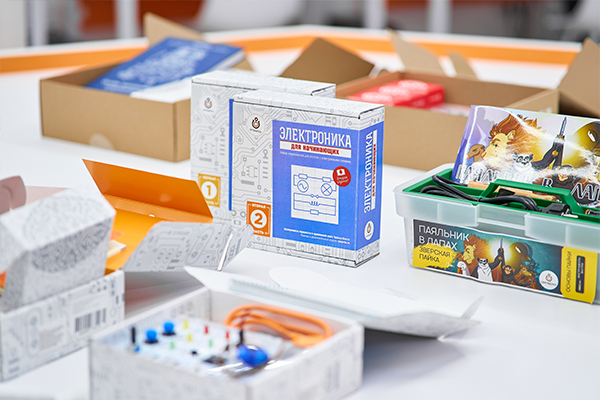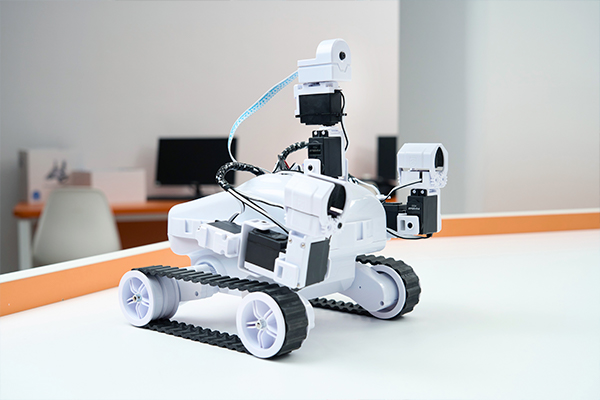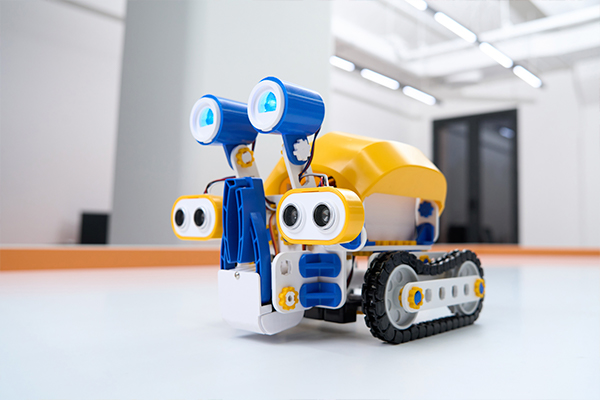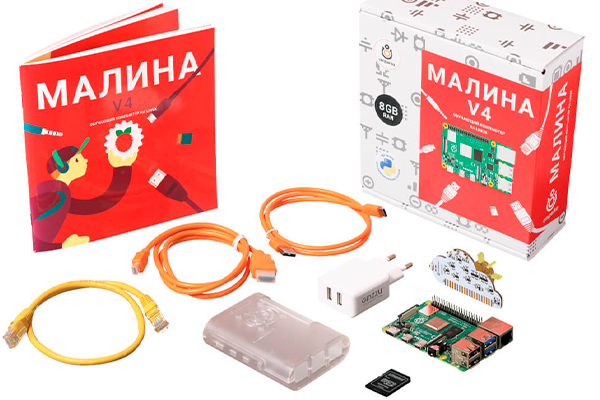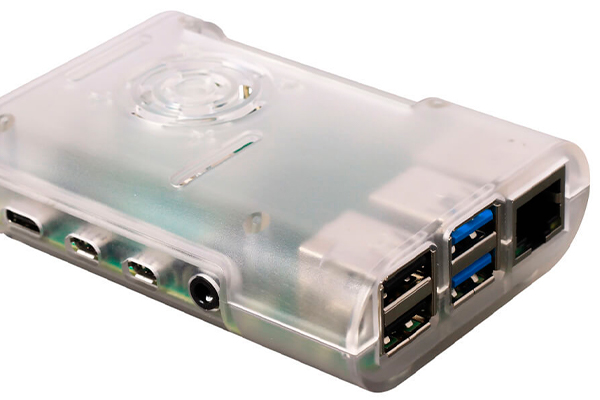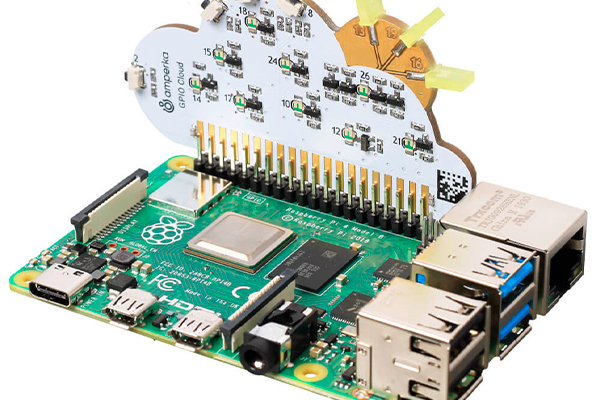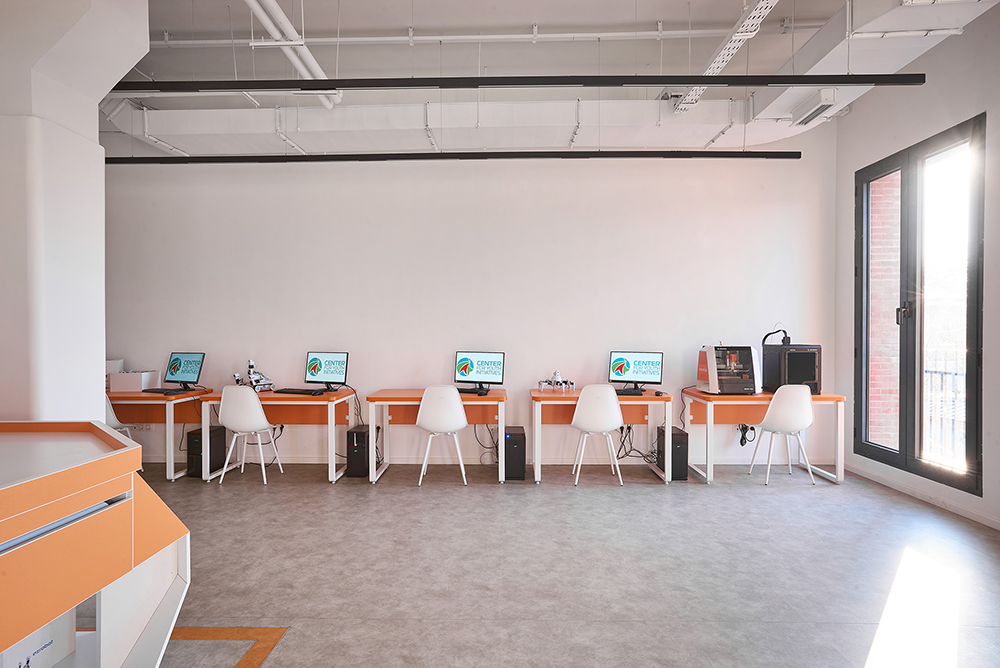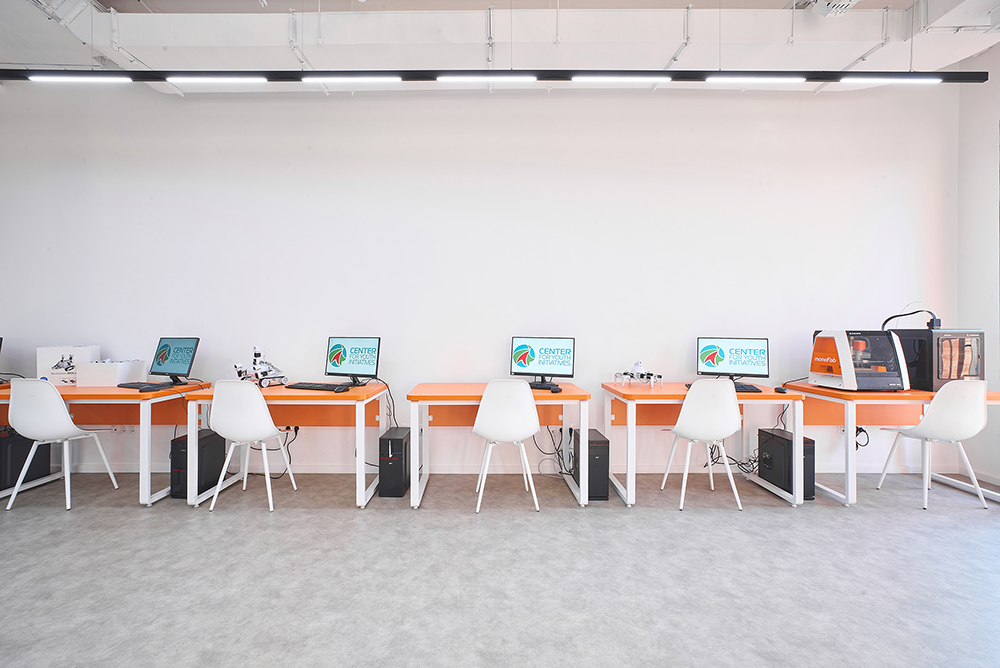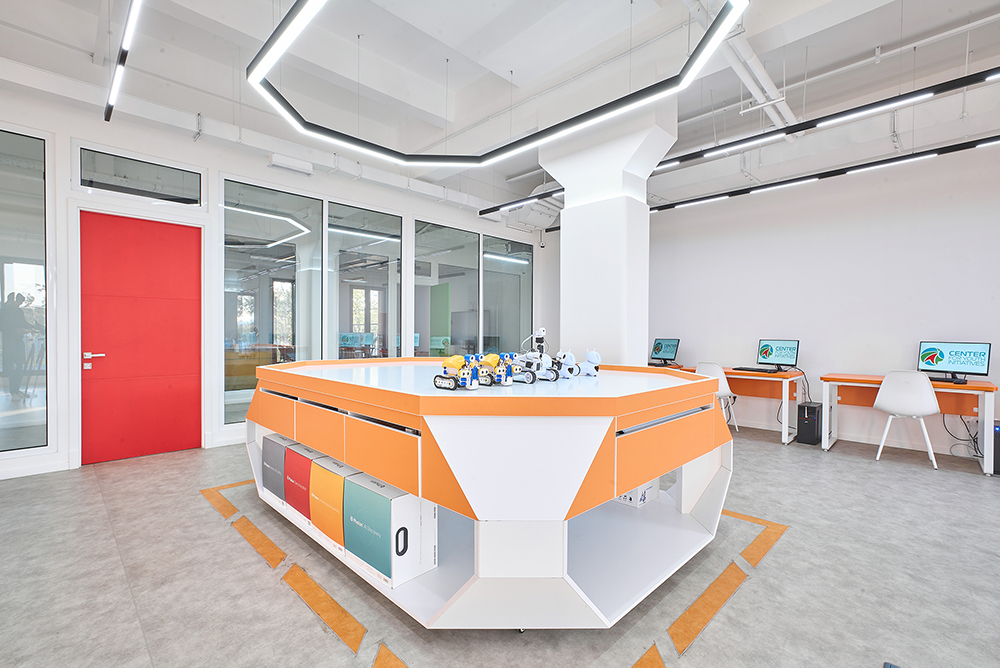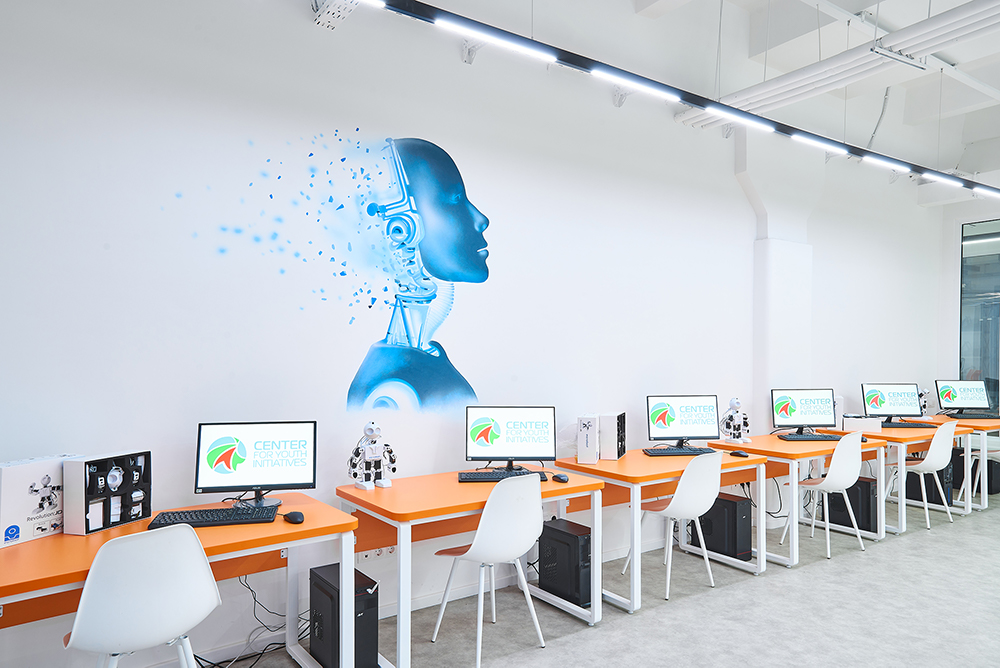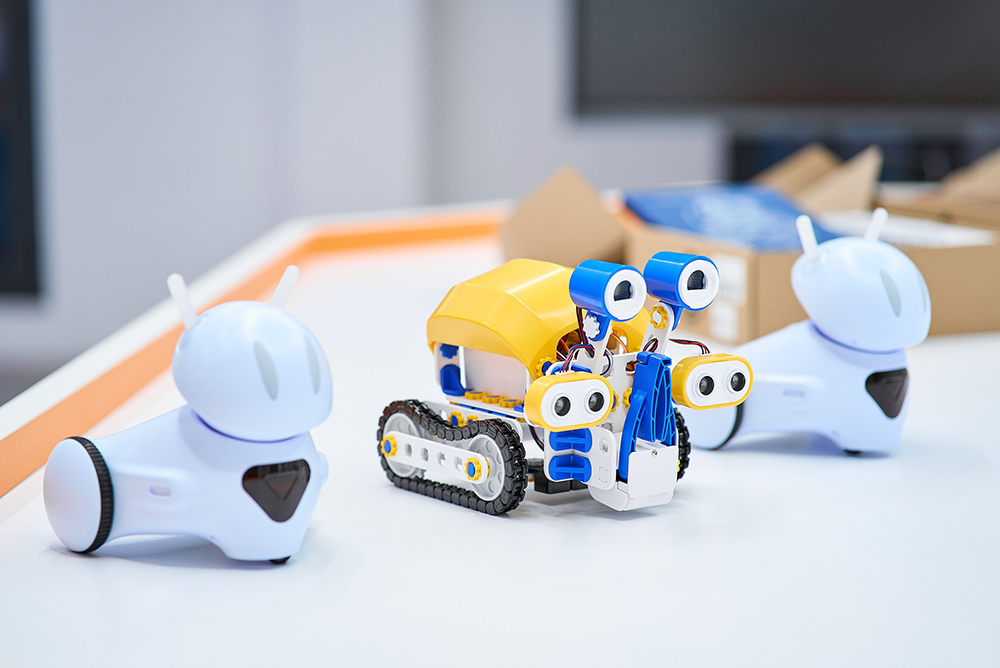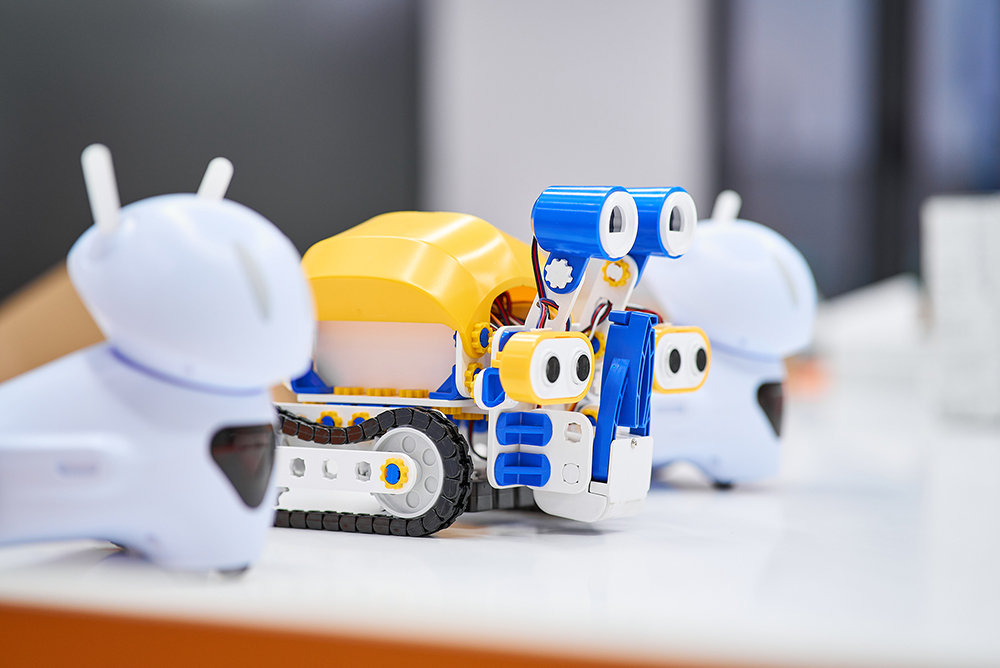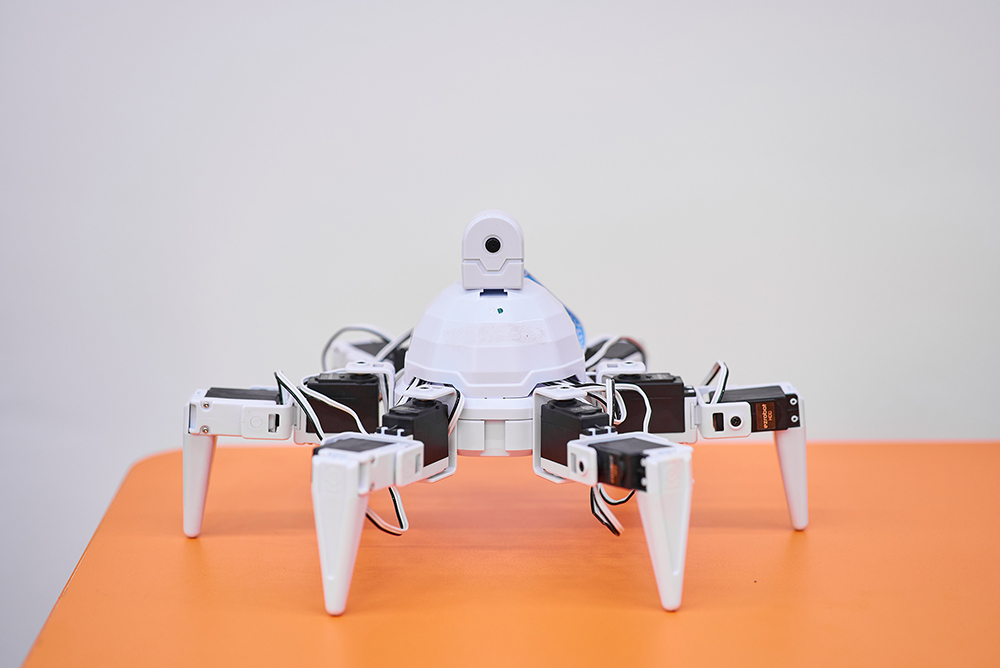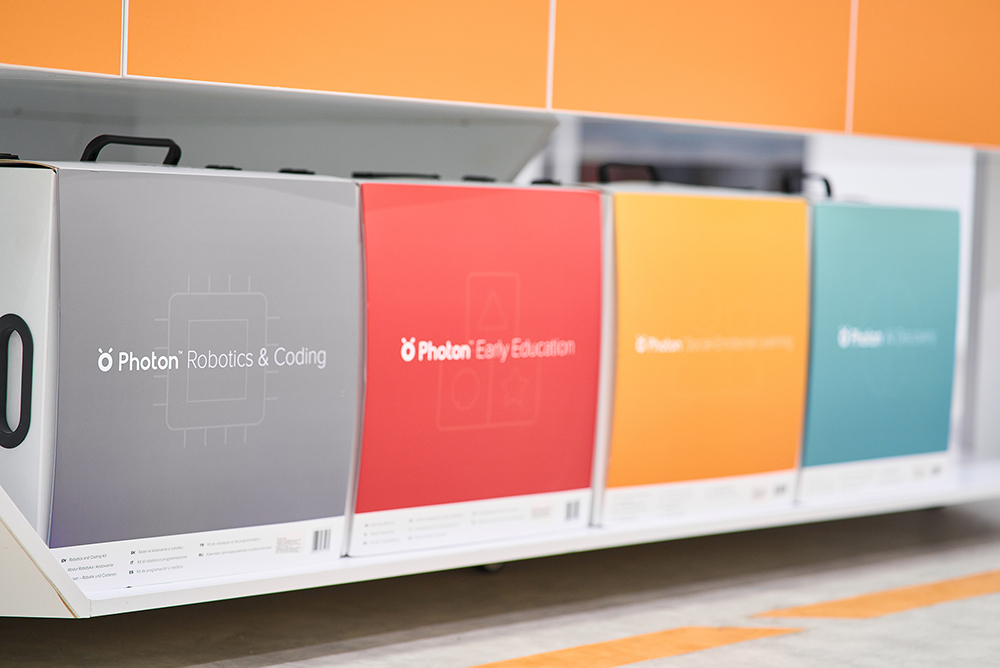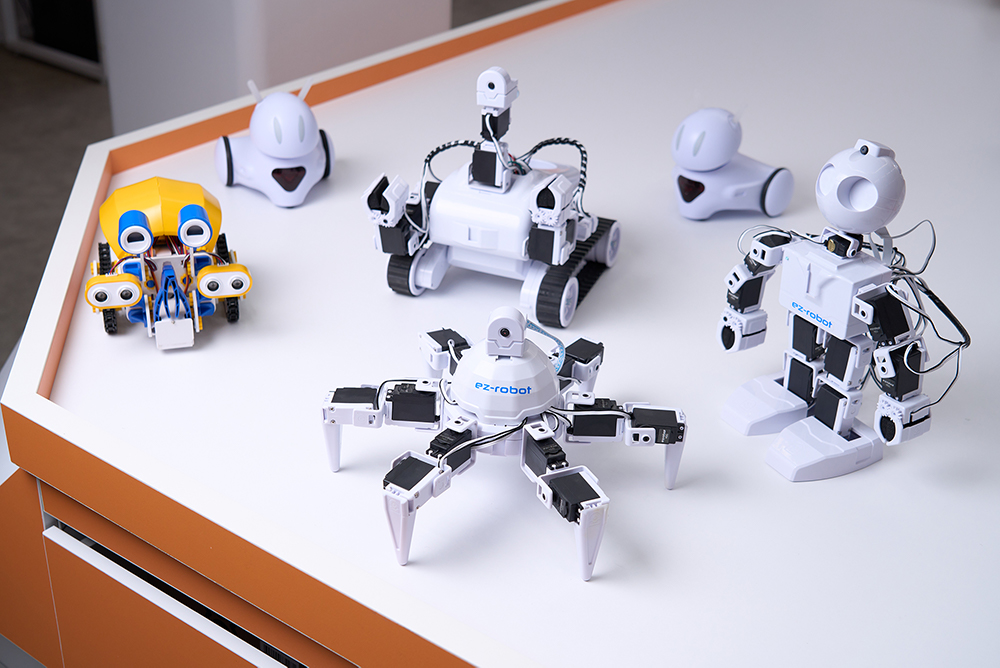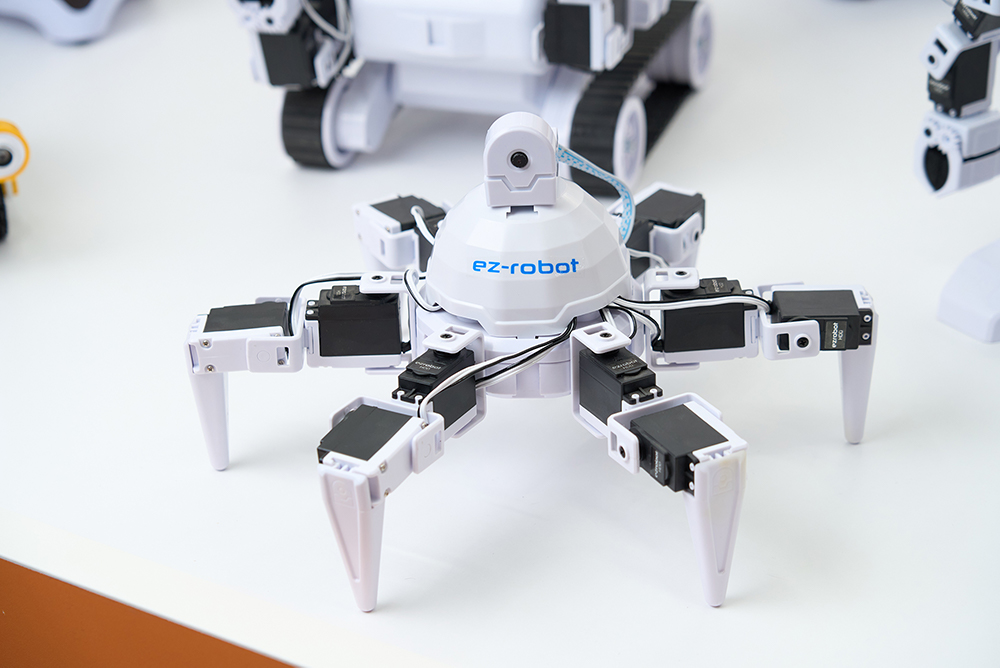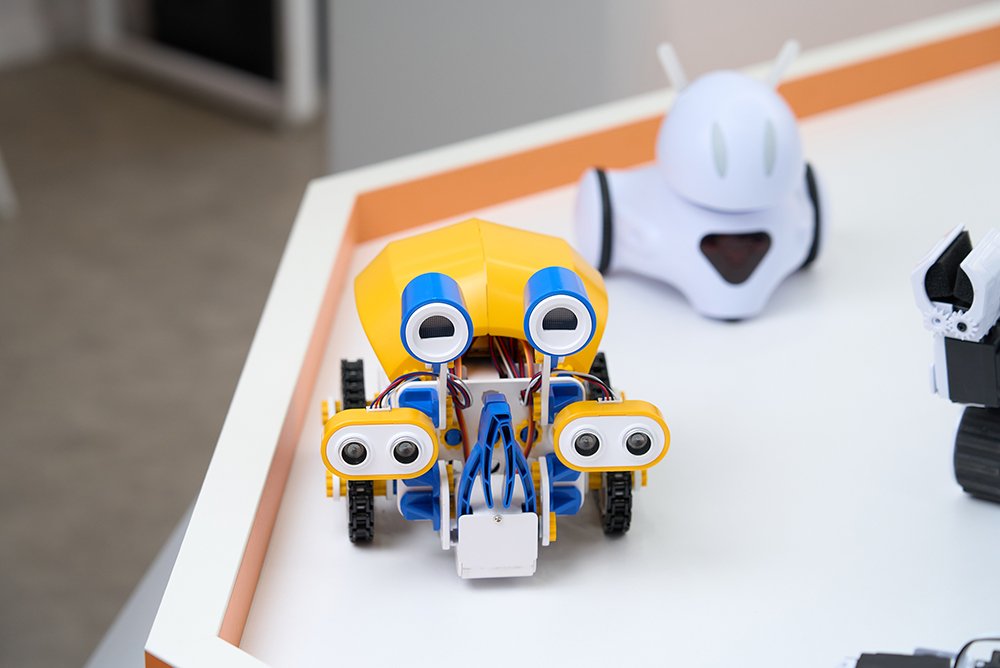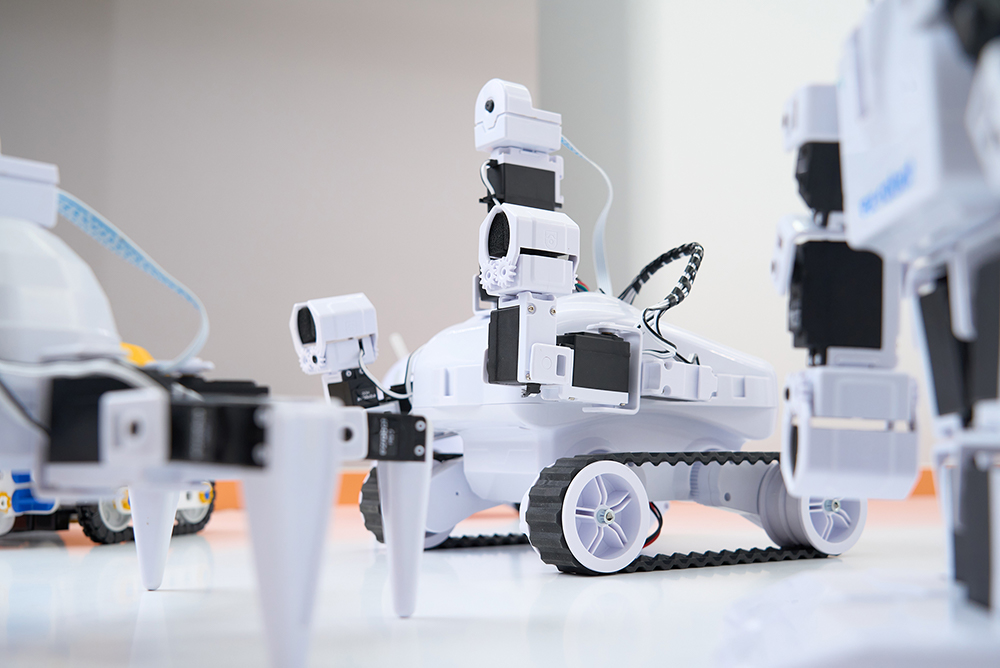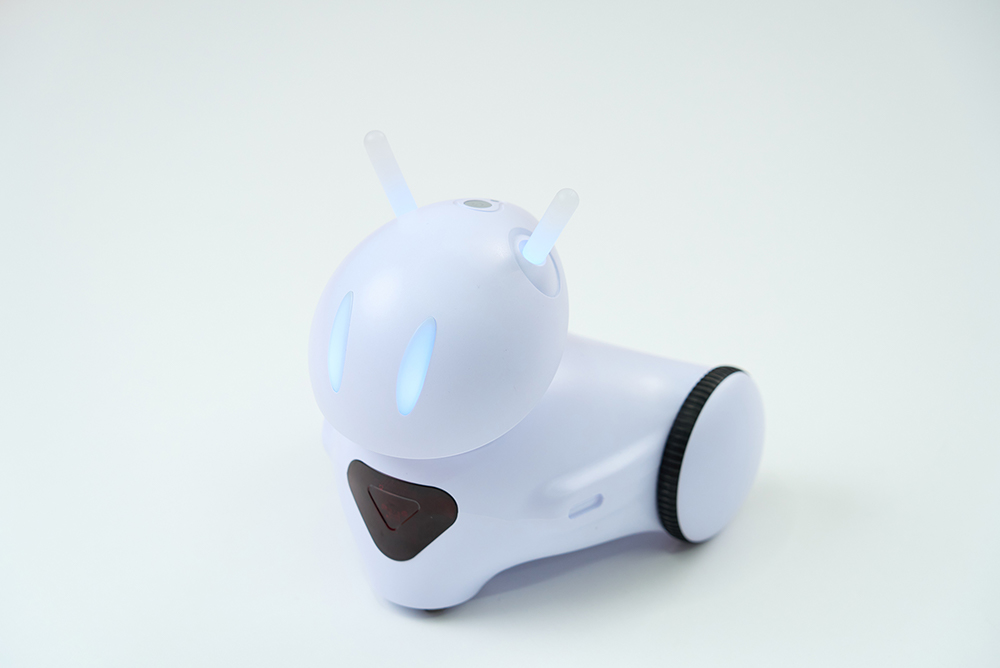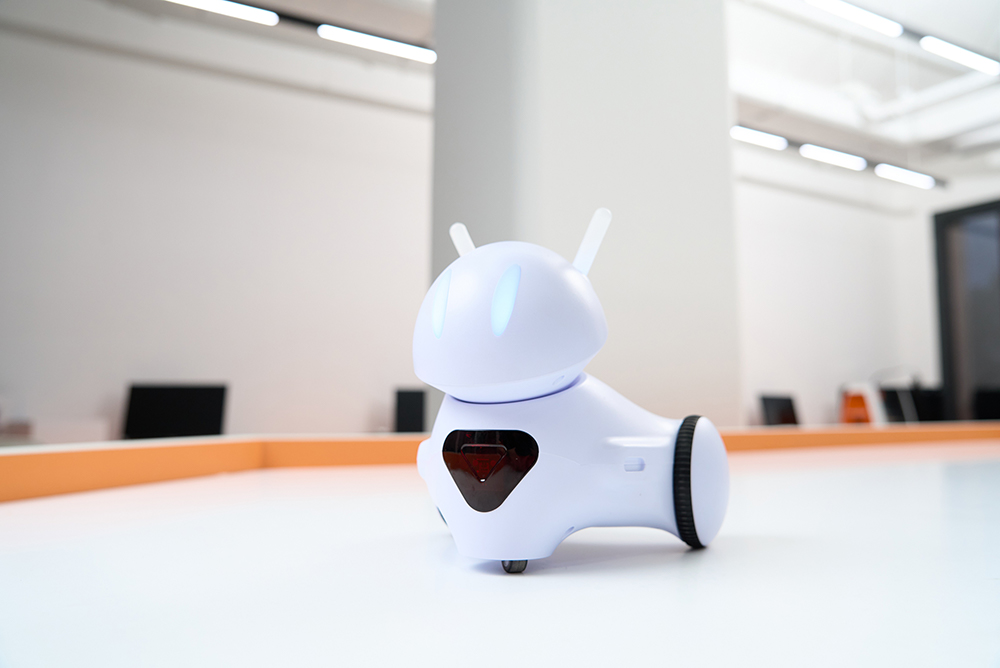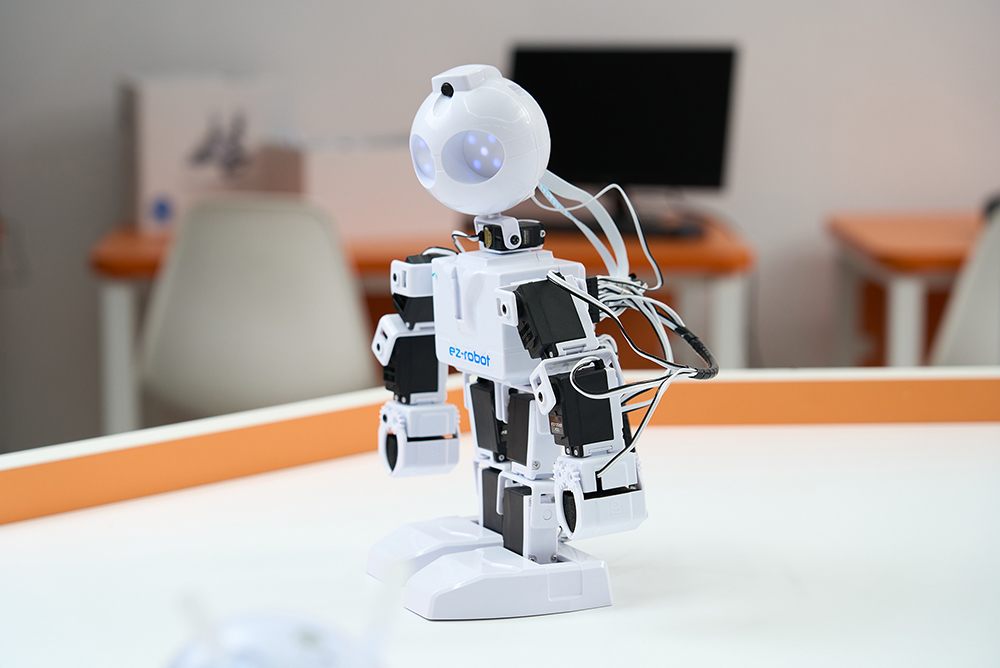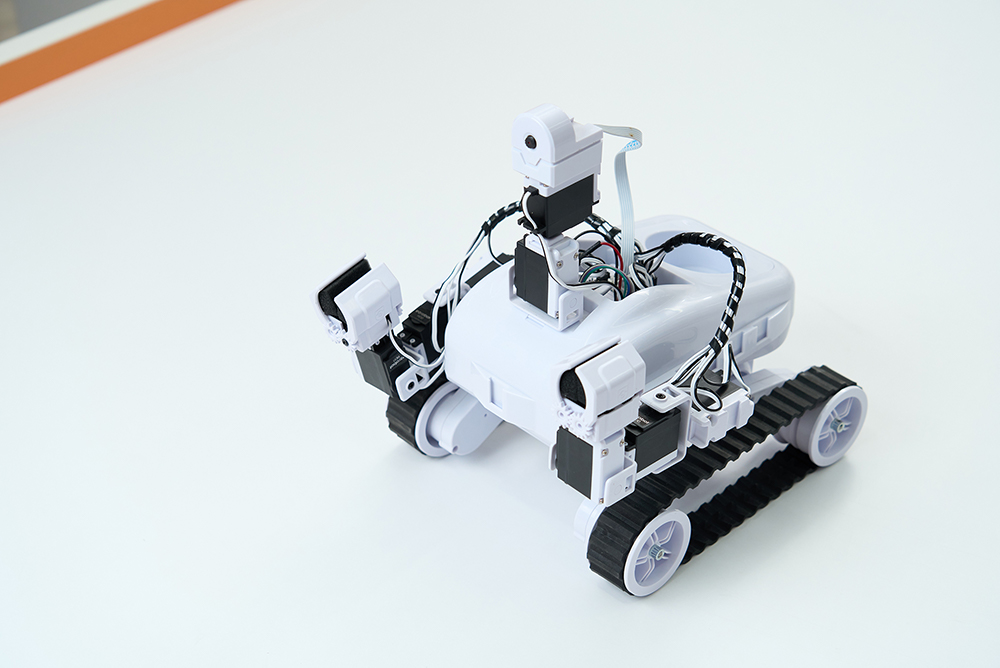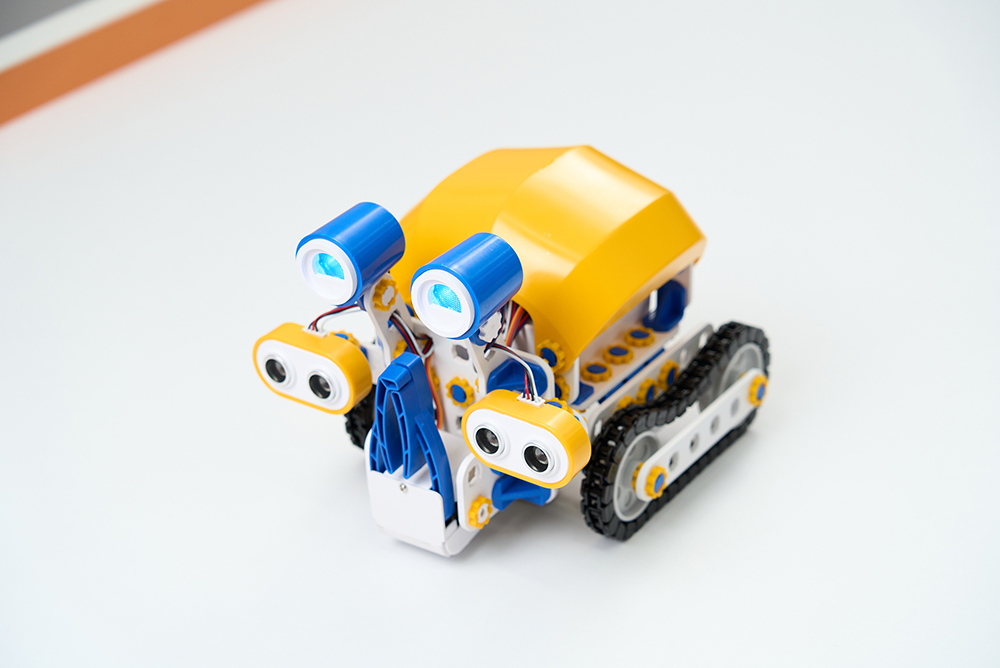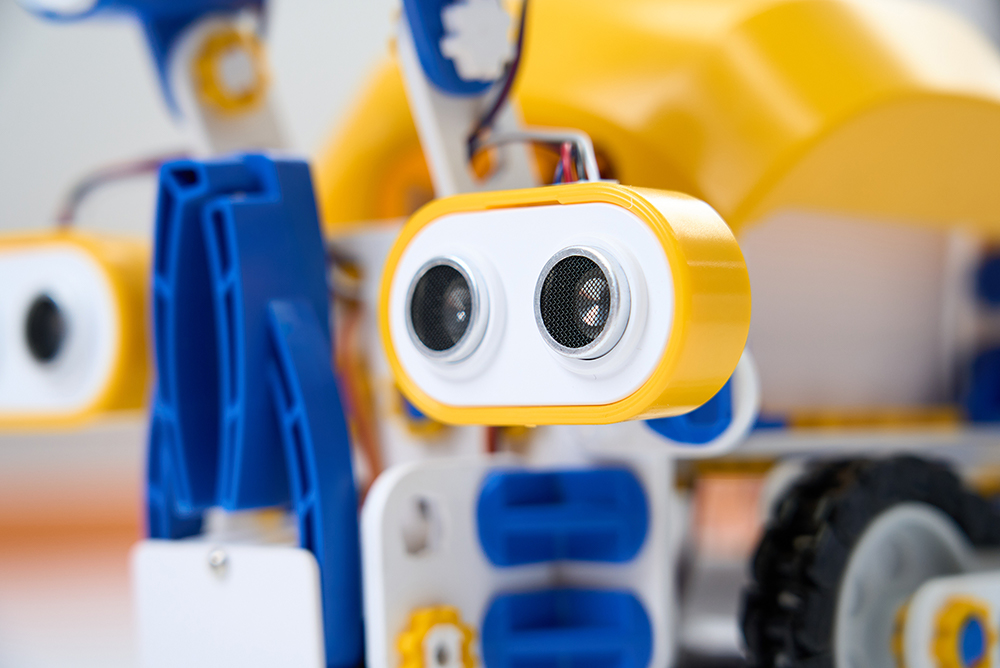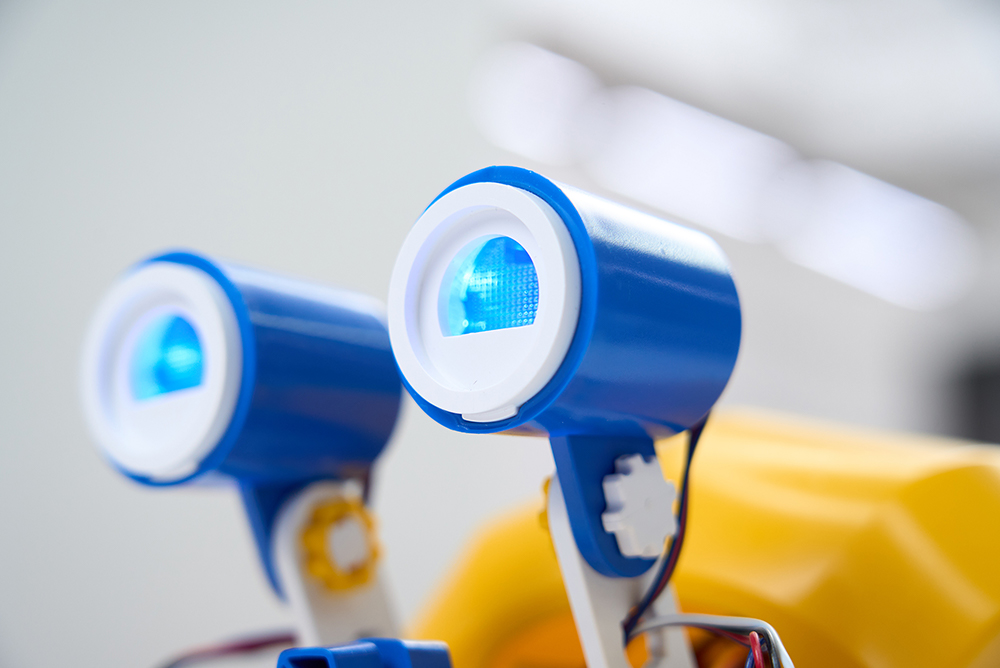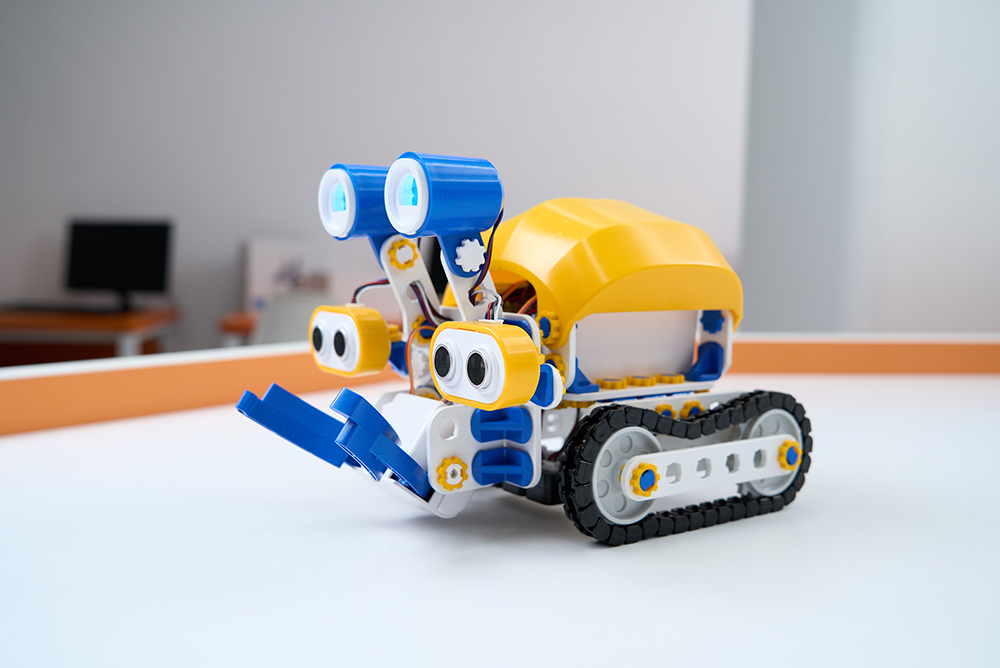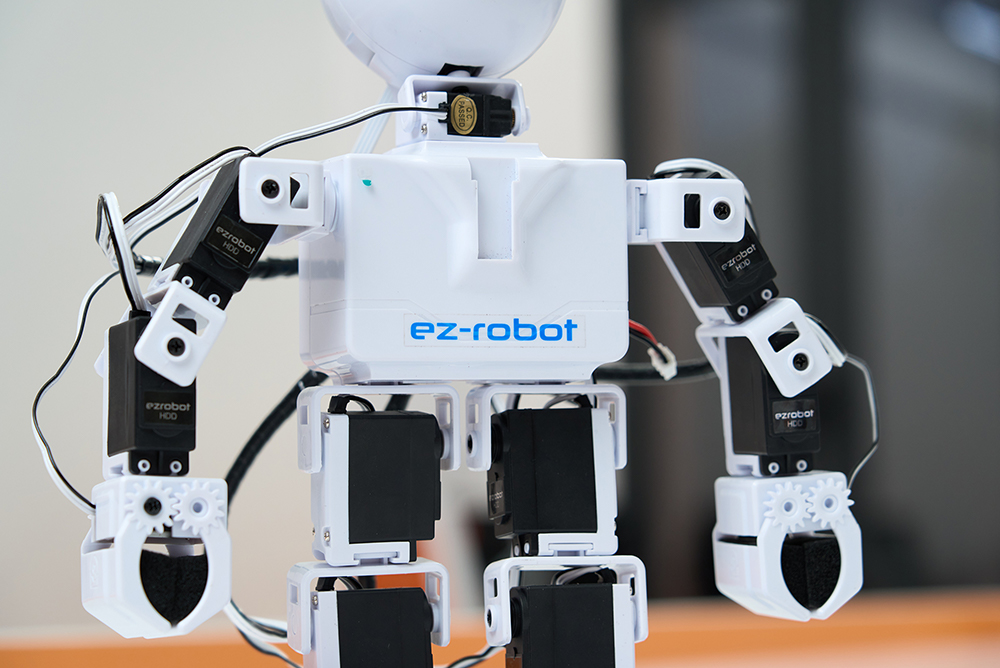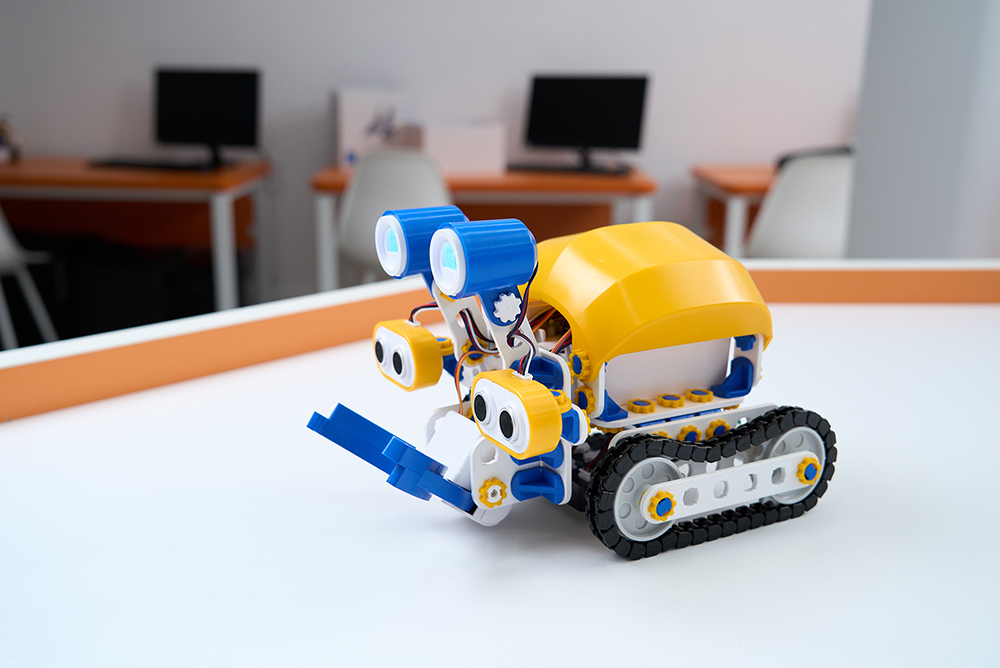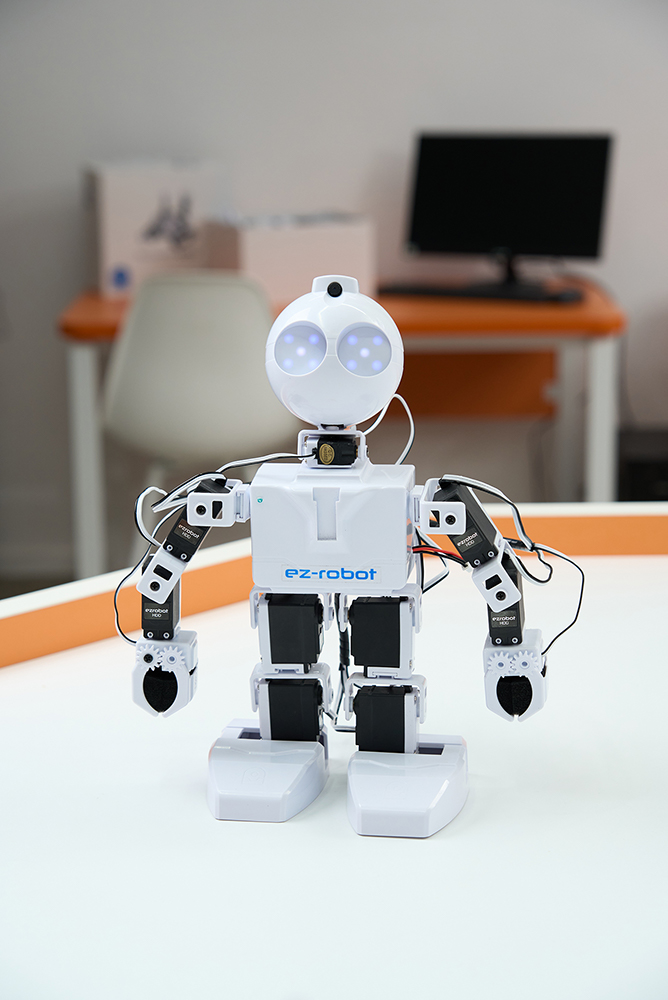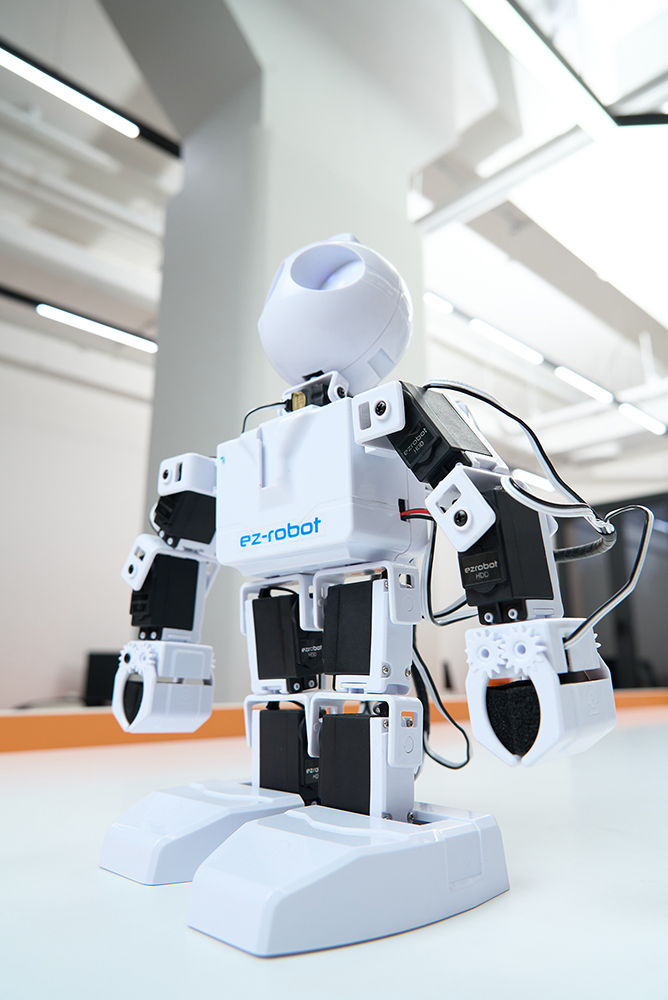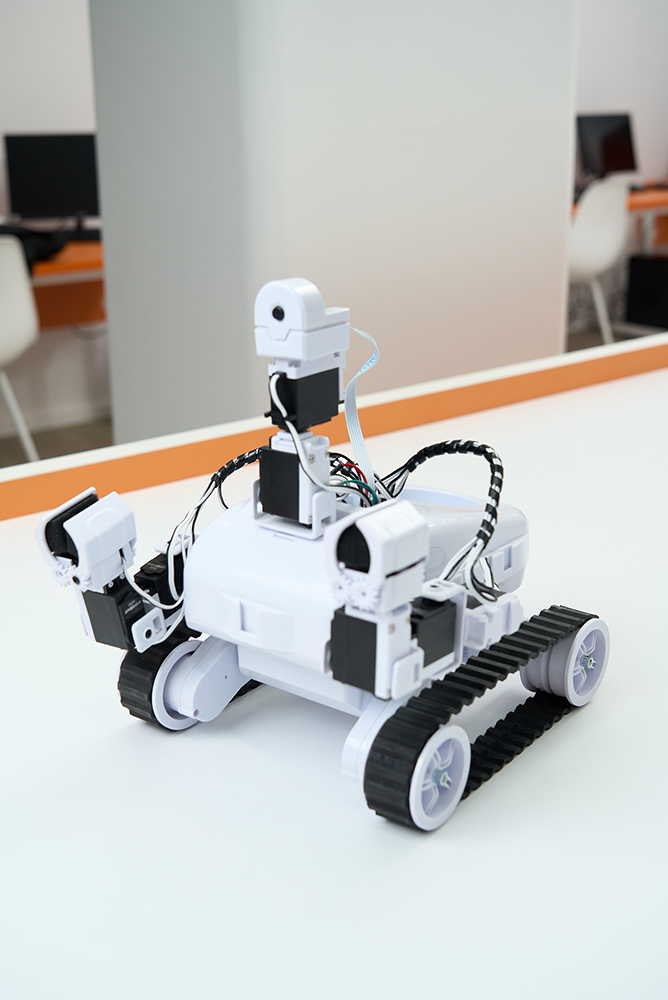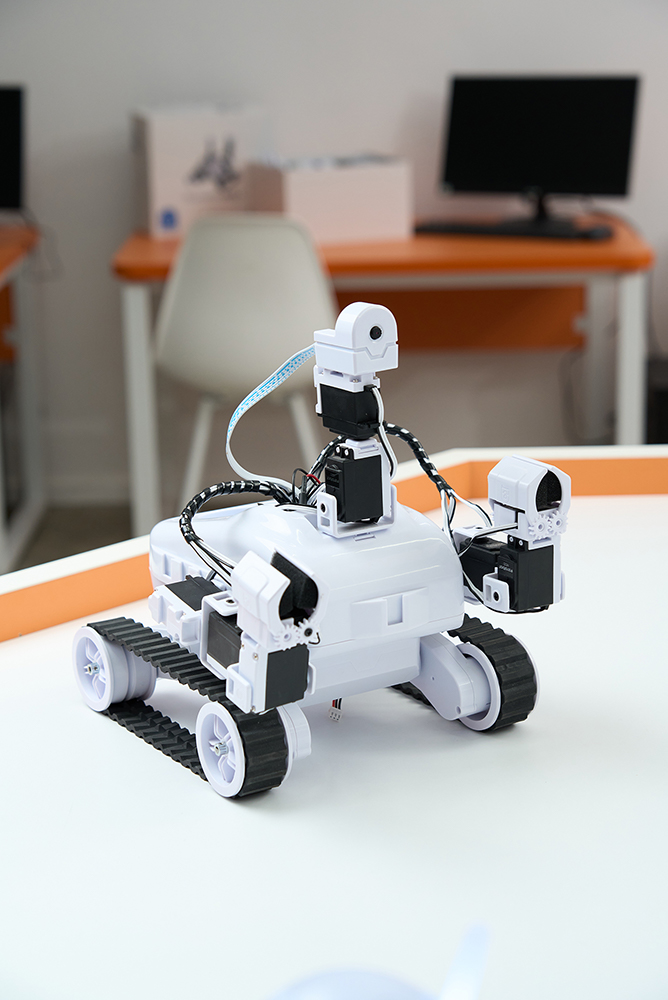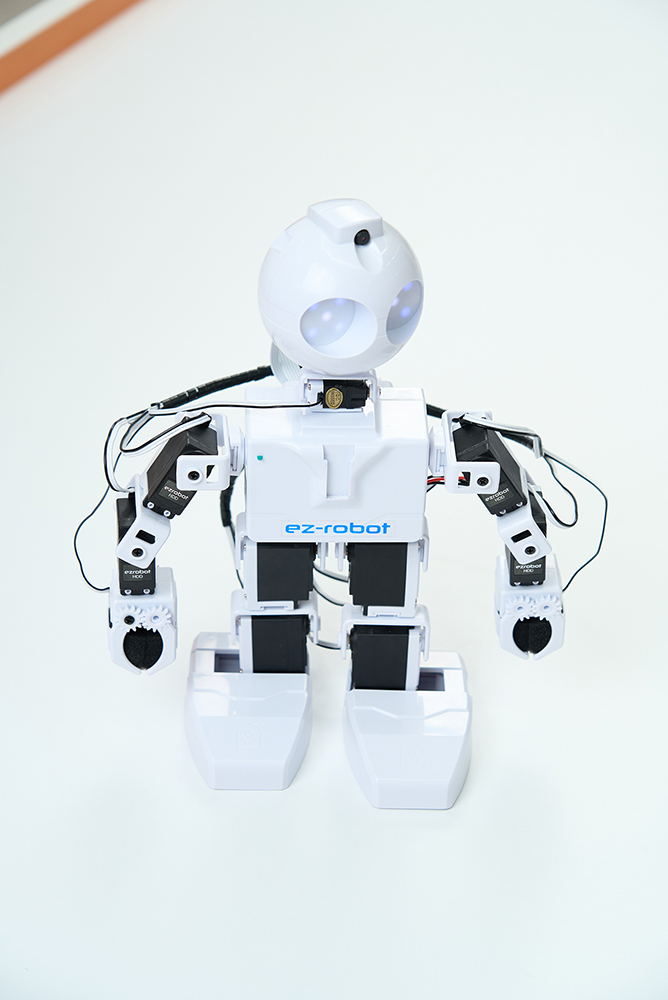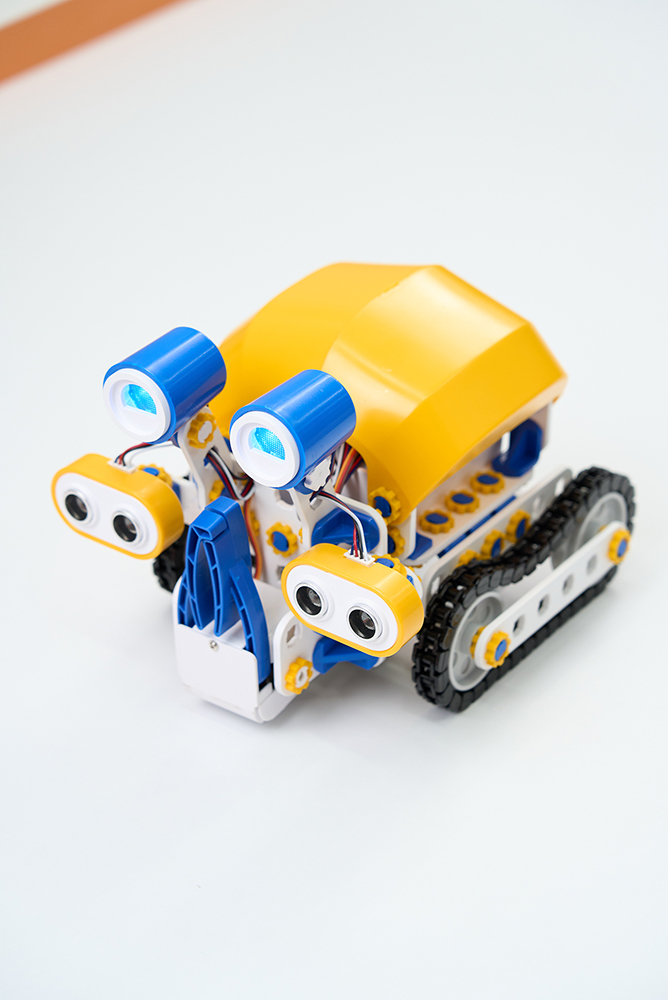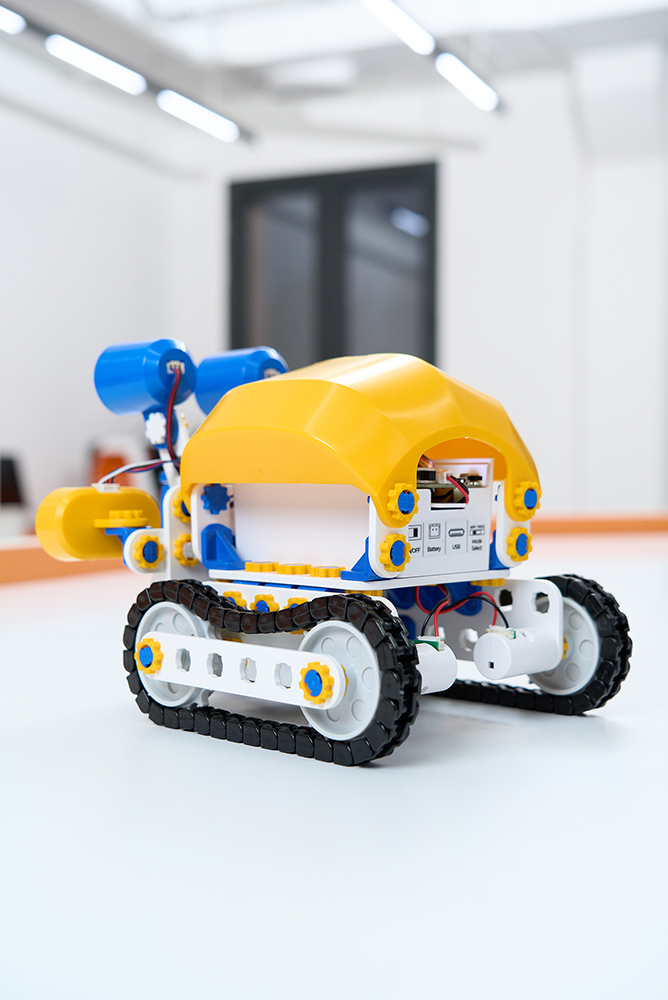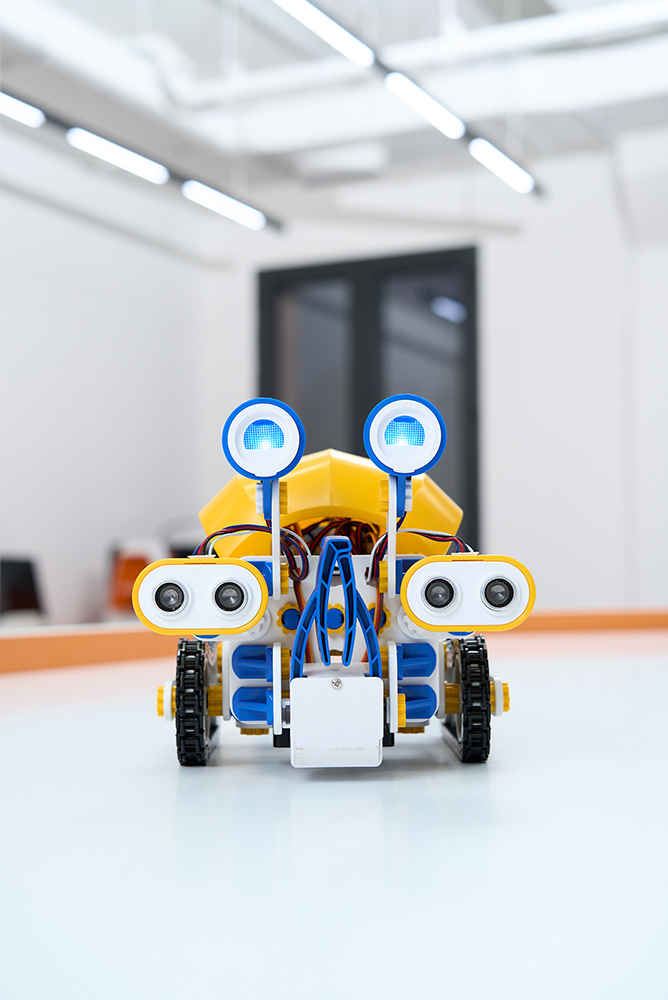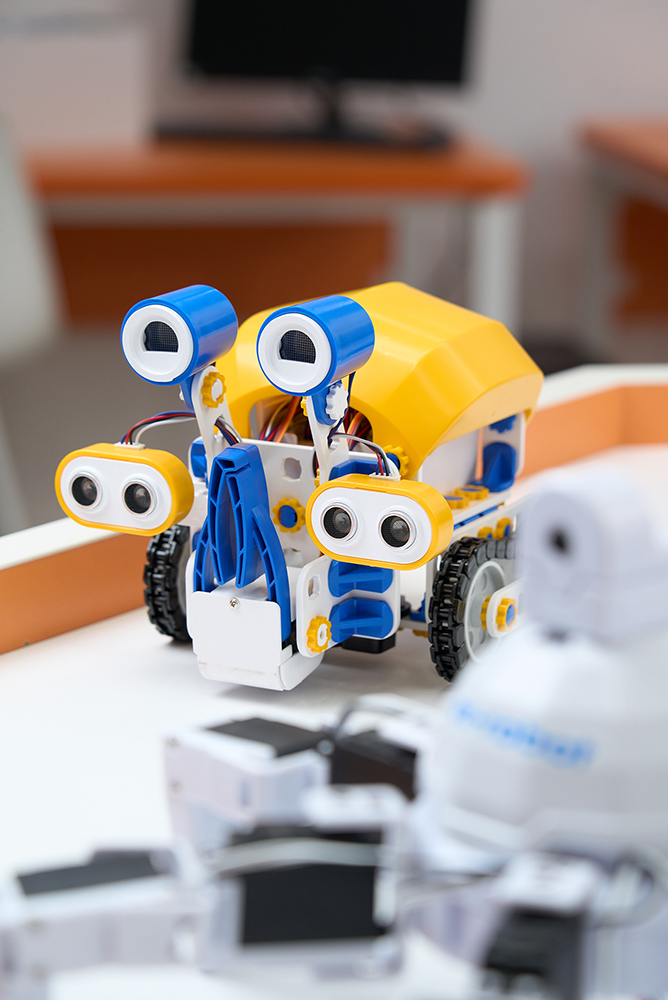Laboratory of Electronics, Programming and Robotics
In this laboratory, we are going to teach young people electronics, programming and robotics based on the world’s best teaching practices, and using STEAM teaching materials from Europe, Canada and the CIS Region.
OUR MISSION
Our goal is to inspire a new generation of scientists, technologists and engineers. We believe that understanding of electronics, programming, and robotics is crucial in the contemporary world because it empowers individuals with skills for innovation, problem-solving, automation, diverse career opportunities, and informed decision-making in a tech-driven society.
OUR FOCUS
- Practical application
Demonstrating how robots can perform tasks like house cleaning, healthcare assistance, or emergency support. - Hands-on learning with electronics kits.
Engaging children and teenagers in building devices such as traffic lights, robots, musical instruments, to understand electronics and robotics. - Real-life coding skills.
Introducing programming languages like Python, C++, and JavaScript, with Scratch as a foundational tool for young learners
ELECTRONICS, PROGRAMMING AND ROBOTICS
Having knowledge in electronics, programming, and robotics provides a diverse holistic skill set that comes with numerous advantages:
- Problem-Solving Skills.
Understanding these fields allows you to approach complex problems from multiple angles, fostering critical thinking and innovative solutions. - Versatility.
You can apply these skills across various industries, from healthcare to manufacturing, entertainment to research, making you adaptable in different environments. - Interdisciplinary Understanding.
You gain insights into how hardware and software interact, enabling you to create integrated systems that function seamlessly. - Career Opportunities.
Proficiency in these areas opens doors to a wide range of career paths, including robotics engineering, software development, automation, and IoT (Internet of Things) fields. - Innovation.
With this knowledge, you can contribute to cutting-edge technologies, pushing the boundaries of what's possible in the realm of automation, AI, and machine learning. - Creativity.
Combining electronics, programming, and robotics allows you to bring imaginative ideas to life, whether it's designing new devices, improving existing technologies, or inventing novel solutions. - Problem Automation.
You can automate tasks, enhancing efficiency and productivity in various industries, reducing human error and streamlining processes. - Collaborative Potential.
Understanding these domains enables you to collaborate effectively with professionals from diverse backgrounds, fostering teamwork and interdisciplinary projects. - Futureproofing.
As technology continues to advance, having a grasp of these foundational skills can help you stay relevant and adaptable in a rapidly evolving job market. - Personal Projects.
Beyond professional benefits, you can undertake exciting personal projects, from building robots to creating automated home systems, expanding your skills and exploring your interests.
TOOLS AND KITS
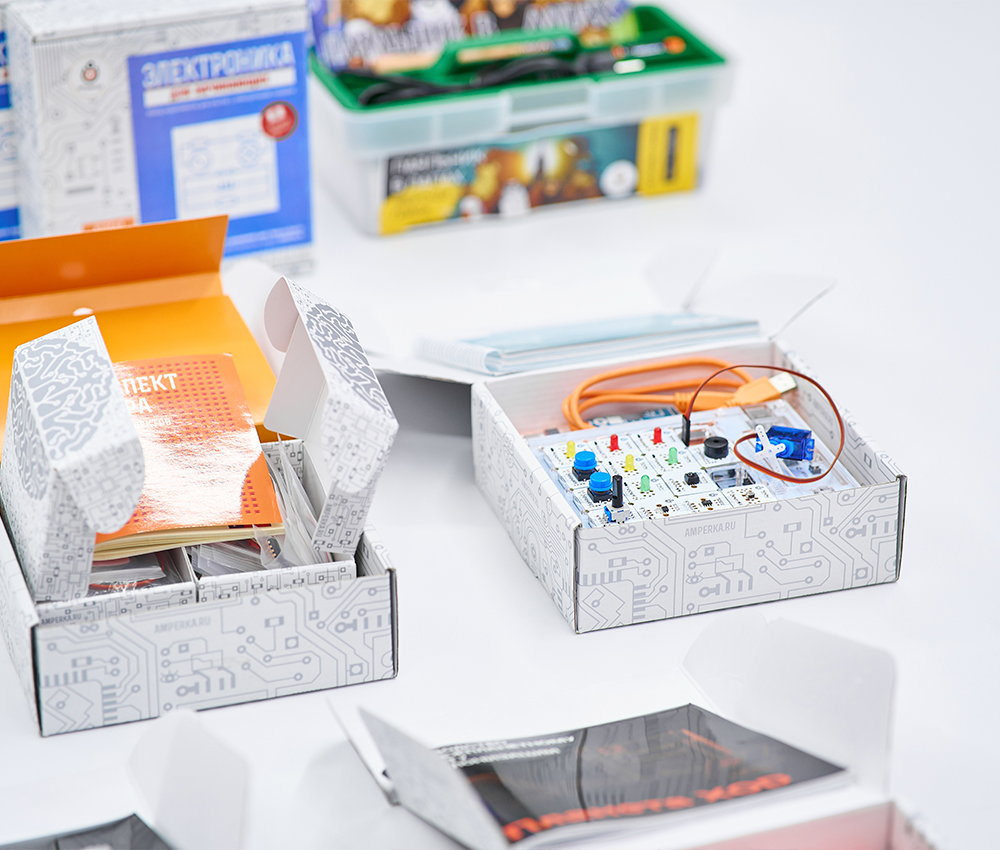
Tools and Kits
Amperka provides accessible and engaging tools and sets for learning and experimenting with electronics. Tools include components such as sensors, microcontrollers, light-emitting diodes (LEDs), motors, and other electronic parts. Sets contain detailed instructions, making it easier for users to understand and assemble circuits, write code, program, and create various projects. Amperka's products are designed to enable users to build anything from simple experiments to more complex electronic devices.
AIMS
Amperka aims to make electronics, coding and programming more approachable, interactive, practical and enjoyable by offering hands-on experiences and resources that encourage exploration, creativity, and innovation.
ADVANTAGES
Knowing electronics, coding, and programming offers a comprehensive skill set that has several advantages:
Holistic Understanding
Electronics knowledge combined with coding and programming skills creates a holistic understanding of technology, enabling individuals to comprehend and manipulate digital systems at different levels.
Innovation
This combination empowers individuals to innovate and create a wide range of technological solutions, from hardware development to software applications, fostering creativity and problem-solving.
Versatility
Understanding both electronics and programming allows individuals to bridge the gap between hardware and software, making them adaptable to various fields and roles that require multidisciplinary expertise.
Career Opportunities
It expands career opportunities in fields such as robotics, IoT (Internet of Things), embedded systems, artificial intelligence, and more, where knowledge of both electronics and programming is highly valued.
Efficiency and Automation
The synergy between electronics and programming enables the creation of efficient systems, automation of tasks, and development of smart devices that can enhance productivity in various industries.
Critical Thinking
Learning electronics alongside coding and programming nurtures critical thinking, logical reasoning, and problem-solving skills, which are beneficial beyond technical domains.
In summary, the integration of electronics, coding, and programming skills offers a broad skill set that not only facilitates technical proficiency but also nurtures creativity, problem-solving, and adaptability in a technology-driven world.
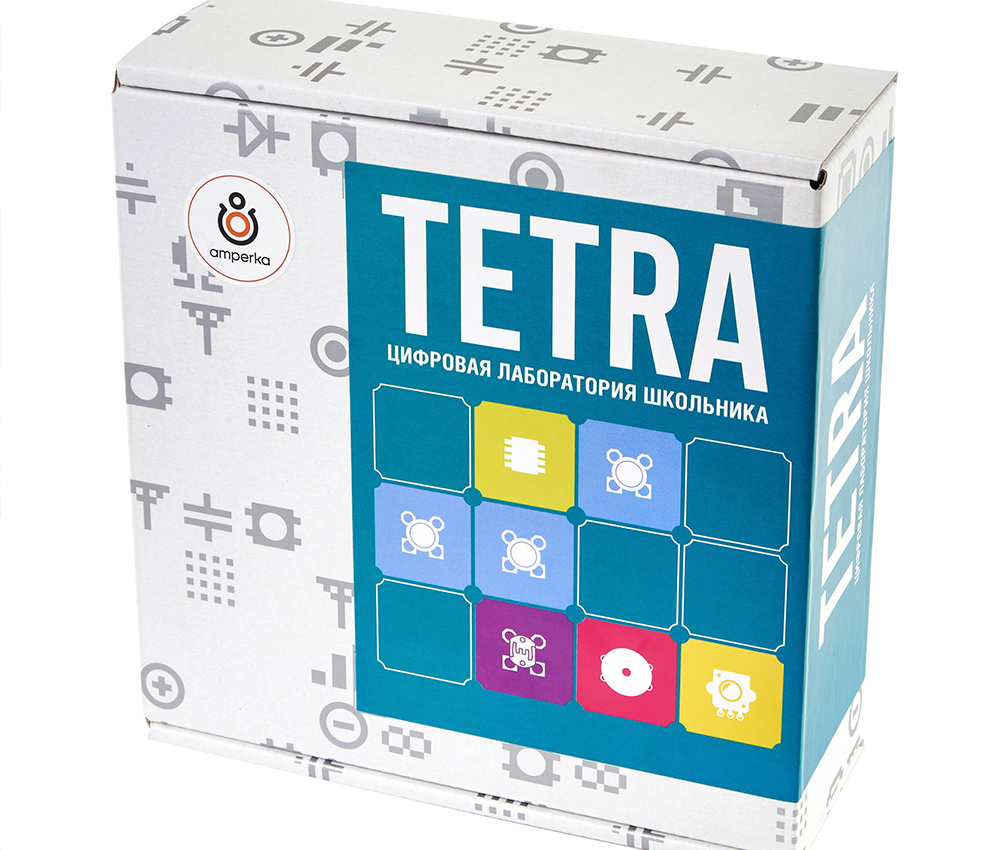
Educational Training
TETRA MBLOCK SET
Do you want to teach your child the basics of programming, but you understand that boring books can forever discourage interest in this topic? The Tetra set is an excellent solution for starting exciting experiments that will not leave the child indifferent and will be the first step in mastering this science. The set consists of a Tetra motherboard, a set of electronic modules and a book with experiments.
Electronics
The Tetra board is a real small computer. You can connect Tetra to your computer via a regular USB cable, and then program it to perform the intended algorithm and thereby create your own gadget.
You can connect various electronic modules to Tetra to detect button presses, measure temperature, light, and read values from other sensors. You can control motors, turn on light-emitting diodes (LEDs), play sound. Each module has its own purpose.
Programming
The desired behavior of the device is described using the visual programming language mBlock, which is specially created for children to learn the basics of programming.
mBlock programs are composed of a set of logical blocks. They can set conditions, cycles, read sensor readings, send executive commands, and enter variables. Everything is like in real programming, only simpler and more visual: you don’t need to type the code, everything is intuitive.
Educational materials
Educational materials contain information on microcontrollers and the basics of digital devices. Materials contain experiments and programs that go from simple to more complex. They are provided with detailed explanations and comments so that the child gets the essence.
For whom?
This course will be of interest to children from 9 years old. Upon completion of the course, the young technician will expand skills:
- master algorithmic thinking,
- learn the basic principles of programming,
- master visual programming in the mBlock environment,
- understand how modern electronics based on microcontrollers work.
"Arduino is a universal microcontroller-based platform, which allows anyone to create and program their own electronic devices."
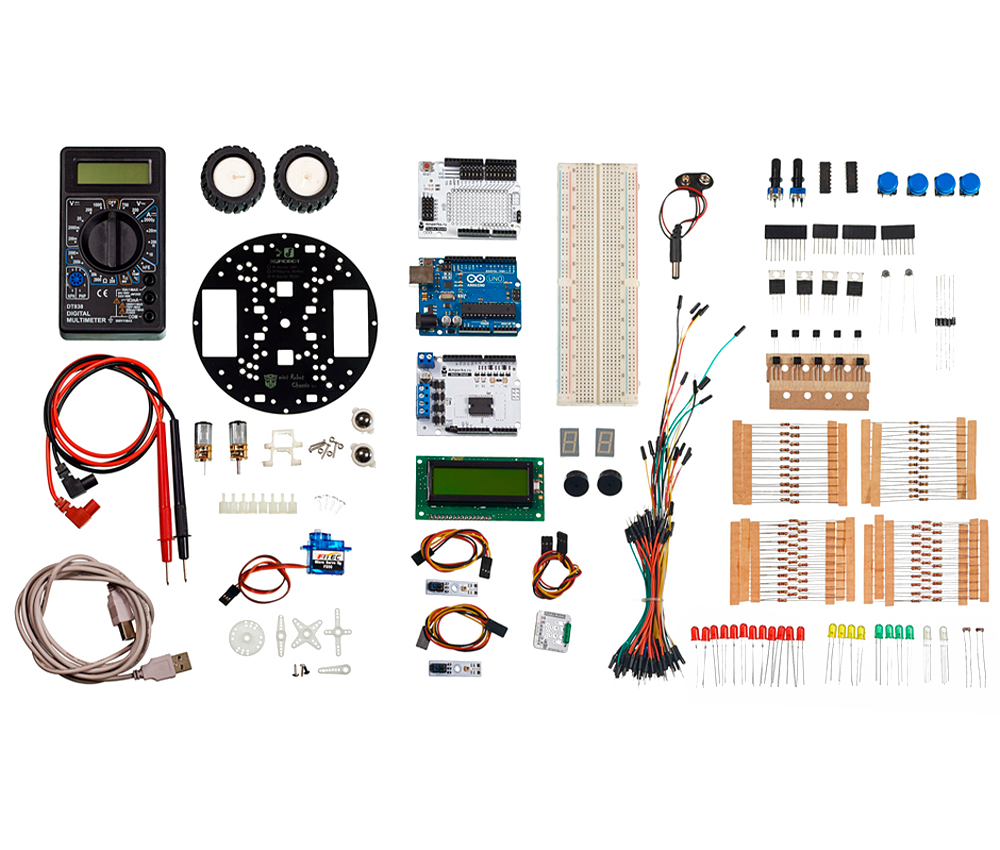
EDUCATIONAL TRAINING – AMPERKA SET
The Amperka set will introduce schoolchildren to programming in the programming language C++ and give them the opportunity to build their own mobile robot. The educational set includes an Iskra Uno (the analogue of Arduino) printed circuit board, more than 150 radio components and educational materials.
Electronics
The components included in the set are carefully selected and balanced elements of a mini laboratory. Components vary from basic electronic components like resistors, light-emitting diodes (LEDs) and transistors to motors, sensors, Liquid Crystal Display (LCD) screen and mobile platform for building robots. The set also includes breadboards and breadboard wires. These enable to assemble any electrical circuit in a matter of minutes without any soldering. The components are simply inserted and connected with wires.
Educational materials
Educational materials contain information on the fundamentals of microcontroller programming and explains step by step how electronic devices are built. The material is presented from simple to complex. First topics are devoted to the concept of a microcontroller, the basics of programming, and a refresher on the basic laws of electricity. The following discuss important aspects of creating your own electronic devices. And by the end of the course, it becomes possible to create your own autonomous mobile robot.
For whom?
This course will be of interest to novice engineers aged 12 years and older. Upon completion of the course, the young technician:
- will gain skills in assembling electrical circuits;
- learn how to create digital devices and even assemble a robot;
- apply knowledge about the laws of electricity in practice;
- will master application programming in C++.

